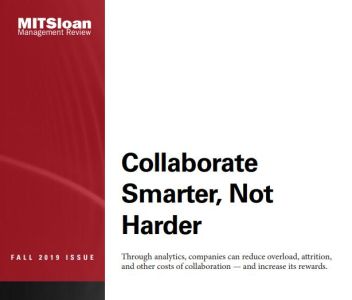
Collaborate Smarter, Not Harder
Through analytics, companies can reduce overload, attrition, and other costs of collaboration – and increase its rewards.
Read or listen offline
Amazon KindleRecommendation
Collaboration is often sold as a universal positive. However, without the proper structure and analysis, collaboration can actually undermine corporate goals. This engaging guide by business professors Rob Cross, Thomas H. Davenport and Peter Gray for the MIT Sloan Management Review will help any reader – whether a junior analyst or a senior manager – to understand not just why but how teams should collaborate. It also provides detailed, real-world examples showing that the right collaboration analysis will yield improvements across several areas, including employee morale, retention and increased productivity. Diagrams and a digestible list-style structure help make the full article a worthwhile read.
Summary
About the Authors
Rob Cross and Thomas H. Davenport are both professors at Babson College. Peter Gray is a business professor at the University of Virginia.
























Comment on this summary